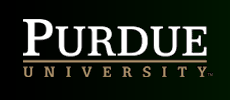Abstract
Industrial hemp production has garnered producer attention as a potential summer crop alternative in Oklahoma. Farmers considering the inclusion of hemp, an emerging new crop, in their operations need to factor in risk and uncertainty. We conducted a risk analysis to determine the optimal allocation of land to conventional crops and hemp for a representative 1,000-acre wheat farm in northeastern Oklahoma under production and market risk. Target MOTAD (minimization of total absolute deviation) model was used to focus on downside risk and hemp market price uncertainty. Six double-cropping systems for double- cropped winter wheat were considered, including sorghum, sesame, hemp for grain, hemp for fiber, hemp for dual grain and fiber, and hemp for floral materials. Less than 4% of the 1,000-acre available land allocated to hemp for floral material and as much as 800 acres of hemp for grain and hemp for dual grain and fiber, were profit- maximizing allocations depending on the producer’s tolerance for downside risk, target profit levels, control of cross-pollination, and market conditions.
Recommended Citation
Lambert, Lixia H. and Hagerman, Amy D.
(2022)
"Industrial Hemp Production and Market Risk Analysis in Oklahoma,"
Journal of Applied Farm Economics: Vol. 5
:
Iss.
1,
Article 1.
DOI: 10.7771/2331-9151.1054
Available at:
https://docs.lib.purdue.edu/jafe/vol5/iss1/1

